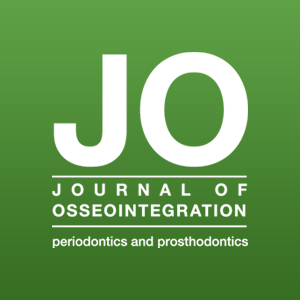Articles
Vol. 15 No. 1 (2023)
Comparison of the primary stability achieved by using dental implants with variable thread designs when placed using different drilling techniques. An in vitro bone modular analysis

Publisher's note
All claims expressed in this article are solely those of the authors and do not necessarily represent those of their affiliated organizations, or those of the publisher, the editors and the reviewers. Any product that may be evaluated in this article or claim that may be made by its manufacturer is not guaranteed or endorsed by the publisher.
All claims expressed in this article are solely those of the authors and do not necessarily represent those of their affiliated organizations, or those of the publisher, the editors and the reviewers. Any product that may be evaluated in this article or claim that may be made by its manufacturer is not guaranteed or endorsed by the publisher.
Received: 26 May 2022
Accepted: 6 June 2022
Accepted: 6 June 2022
1641
Views
1278
Downloads












